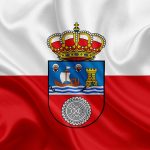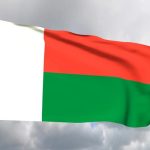
Chuseok
Chuseok is a three-day holiday and harvest festival that begins on the 15th day of the 8th month of the Chinese lunar calendar in South Korea and North Korea. The name of this holiday translates to “Autumn Eve” in English. It is observed before the start of the Autumnal Equinox, although that is not always the case, and sometimes this holiday falls near the end of summer instead.
This holiday and festival is a time when Koreans visit their ancestral hometowns and share a traditional feast with their friends and family. This holiday is often referred to as Korean Thanksgiving Day, and in South Korea, it is one of the most festive and significant holidays of the year.
The Chuseok Festival takes place over a three-day period, which starts the day before Chuseok and ends the day after the holiday.
The History of Chuseok
As is the case with most harvest festivals, the origins of Chuseok can be traced back to when Korea was an agrarian society and depended on a successful harvest for its survival. It is believed that it began with shamanistic celebrations of the harvest moon.
During those ancient practices, food was offered to deities and ancestors, so it may have originated as a form of ancient ancestor worship and evolved from that point into the holiday as it is celebrated today.
Customs, Traditions & Celebrations of Chuseok
Chuseok is also known as Hangawi, which means the 15th day of August (on the lunar calendar). Koreans begin this holiday and the associated festival by traveling back to their homes and having a feast with their family.
This feast usually comprises special foods made just for the occasion. This includes making and serving a rice cake known as Songpyeon. This food is made with new rice that has been finely ground and turned into a dough that is kneaded into round balls and filled with sesame seeds, red beans, chestnuts, or other traditional ingredients.
They are then arranged on pine needles and steamed, which fills the home with the aroma of autumn. Most Korean families come together to make Songpyeon. It is also customary for Koreans to give each other gifts during this holiday. Gifts are given to family members, friends, and even work associates as a sign of appreciation and thanks.
Customary gifts that have been given on this holiday include fresh fruits, cuts of meat, or traditional Korean snacks. Many South Korean manufacturers have taken advantage of this tradition and offer gift sets specifically for the occasion.
All across the country, tables are laid with a variety of foodstuffs, including rice, fish, liquor, fruits, and vegetables. On this day, children dress in bright traditional articles of clothing such as the silk hanbok and bow to their elders to show respect.
For many married women on this day, they are expected to travel to the homes of their in-laws and spend the day preparing food and cleaning the house. Some sociologists believe it is this practice that results in a dramatic spike in the divorce rate after the holiday.
People also pay homage to their ancestors on this holiday. Some visit the tombs of their ancestors, cleaning them and leaving tributes to the spirits of their ancestors. The National Folk Museum of Korea holds a Chuseok Festival.
The museum usually hosts folk plays and performances such as the Turtle Play, as well as performances of kkokdu wooden puppets. Other activities that are usually held by the museum include daenggi traditional ribbon-making events, maedeup knot-making programs, and folk painting events.
They also usually feature traditional Chuseok foods, as well as foods from other countries’ harvest festivals. One of the most anticipated events at the National Folk Museum of Korea during the Chuseok Festival is the ganggangsullae performance.
This is a circle dance that is full of colorful costumes, singing, dancing, and folk games. This dance was traditionally performed by women at night under the full moon on Chuseok but is now performed at the museum.
Another tradition performed at the National Folk Museum of Korea is the Namsadang Nori—also known as the Namsadang Vagabond Clowns’ Play. This is a traditional folk performance that features an exciting performance by male vagabond clowns.
It is believed that this play dates back to the Three Kingdoms Period—or somewhere between 57 B.C. and 668 A.D. Other activities held at the museum include folk games such as tuho arrow-throwing, jegi chagi shuttlecock kicking, and teeter-totter jumping.
There are even long jump rope games. Of course, the National Folk Museum is not the only museum in South Korea holding special events on this day. Other museums such as those in Chuncheon, Daegu, and Gimhae also offer events for this holiday. And most, if not all, of these events are free to the general public.








